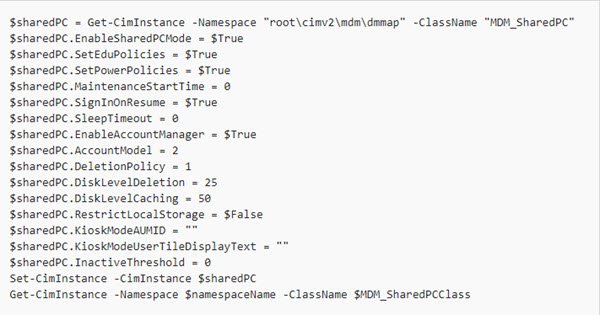If you want to set up the Shared or Guest PC Mode in Windows 11 and Windows 10, then the Group Policy Editor can help you complete your task. With this mode, Windows 11/10 PCs can be optimized for shared use scenarios, including touchdown spaces in an enterprise and temporary customer use in retail. The Guest Account in Windows was discontinued in Windows 10 v1607 – and so Windows 11/10 now offers Shared or Guest PC Mode. This sets up Windows 11/10 Pro, Pro Education, Education, and Enterprise for limited use in certain scenarios. Here is a glimpse at how you can set up the shared PC mode in Windows 11/10.
Shared PC Mode in Windows 11/10
The shared PC mode in Windows 11/10 can be applied to Windows 11/10 Pro, Pro Education, Education, and Enterprise.
When in shared PC mode, only one user can sign in to a Windows machine at a time. When the PC is locked, the currently signed-in user can always be signed out at the lock screen. The shared PCs are joined to an Active Directory or Azure Active Directory domain by a user who has the rights to perform a domain join as a part of a setup process. This way, any user can sign in to the shared PC which is a part of the directory.
If Azure Active Directory Premium is used in setting up the shared PC mode in Windows, any domain user can be configured to sign in with administrative rights. The shared PC mode in Windows also has the Guest option on the sign-in screen. In the Guest option, user credentials or authentication are not required. It simply creates a new local account each time it is used.
Set up shared PC mode in Windows 11/10 using Group Policy
There are several ways to configure shared PC mode in Windows 11/10. One of the ways is to use Group Policy. For this, use the following method:
- Go to Computer Configuration
- Select Administrative Templates
- Select Windows Components
- Then select Windows Update
- Configure Automatic Updates to 4 and check Install during automatic maintenance.
Environments that use Group Policy can use the MDM Bridge WMI Provider to configure the MDM_SharedPC class. For example, open PowerShell as an administrator and enter the following:

After the setting, the shared PC mode in Windows 10 sets local group policies to configure the device. Some of these are configurable using the shared PC mode options. Some of these policies are as follows:
- Admin Templates > Control Panel > Personalization
- Admin Templates > System > Power Management > Button Settings
- Admin Templates > System > Power Management > Sleep Settings
- Admin Templates > System > Power Management > Video and Display Settings
- Admin Templates > System > Power Management > Energy Saver Settings
- Admin Templates > System > Logon
- Admin Templates > System > User Profiles
- Admin Templates > Windows Components
- Admin Templates > Windows Components > Biometrics
- Admin Templates > Windows Components > Data Collection and Preview Builds
- Admin Templates > Windows Components > File Explorer
- Admin Templates > Windows Components > Maintenance Scheduler
- Admin Templates > Windows Components > Windows Hello for Business
- Admin Templates > Windows Components > OneDrive
- Windows Settings > Security Settings > Local Policies > Security Options
To know more about setting up the Shared or Guest PC mode in Windows 10, refer to this Microsoft Document.
Windows Kiosk Mode
The kiosk mode account is introduced in Windows 10. Shared PC mode can be configured to enable Kiosk Mode using Assigned Access option on the sign-in screen. This doesn’t require any user credentials or authentication and creates a new local account each time it is used to run a specified app in assigned access or kiosk mode. It is available in Windows 11 too.
Leave a Reply